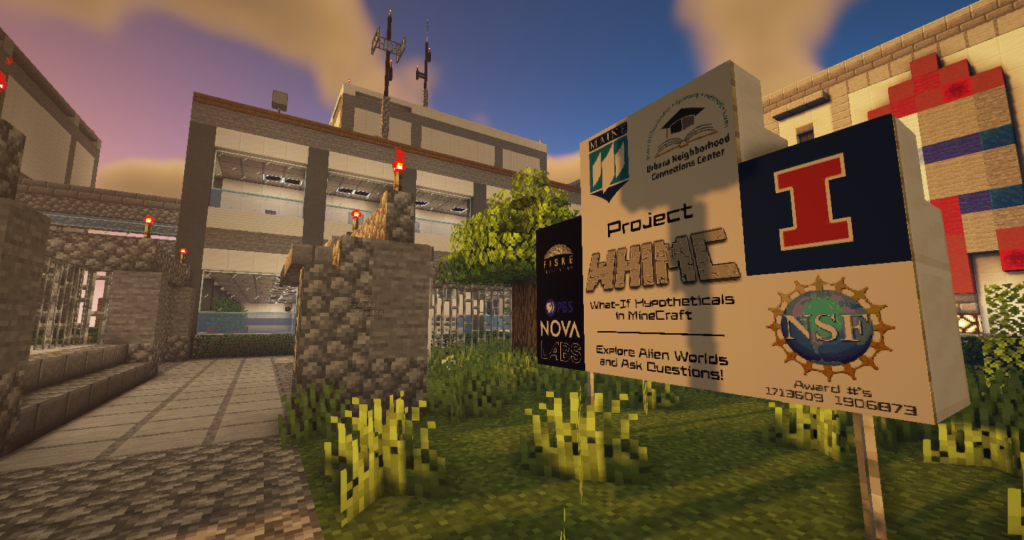About WHIMC
What is WHIMC?
What-If Hypothetical Implementations in Minecraft (WHIMC) is a collection of Minecraft worlds that aim to engage, excite, and generate interest and engagement in Science, Technology, Engineering and Mathematics (STEM) through the development of computer simulations. Built on Minecraft Java Edition,
students can explore and interact with these worlds to learn about various topics in STEM. WHIMC hopes to raise aspiring scientists and engineers on an interactive server and give them
a place to explore these growing interests.
WHIMC Worlds
Rocket Launch Facility
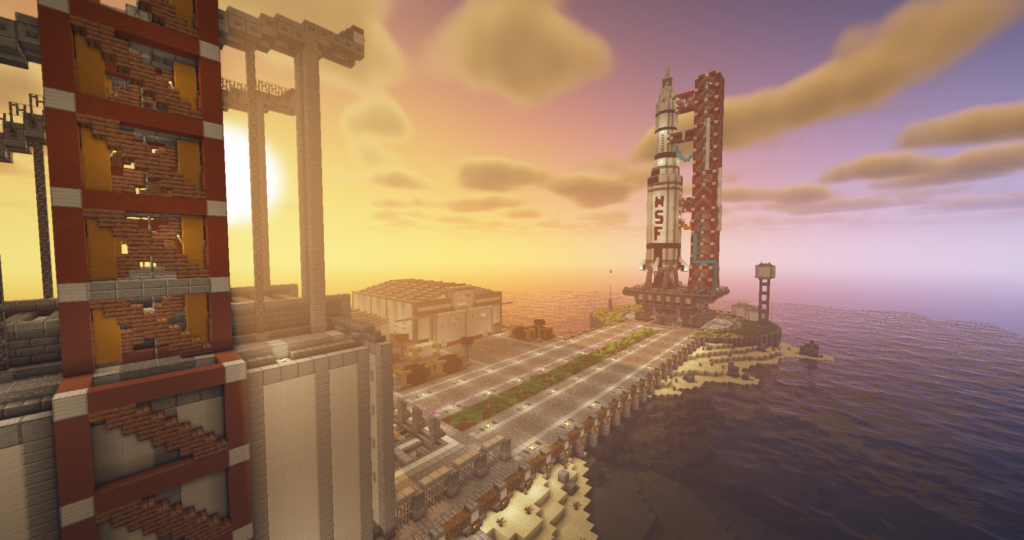
As the very first location one encounters when entering the WHIMC world, the Rocket Launch Facility serves as an introduction area, and is the perfect place to practice moving around, interacting with your environment, and learning about the foundations of space travel.
Here, you and your students will take a look at the base of operations on Earth, where people work hard to make space travel a reality. The facility also serves as a tutorial to familiarize players with WHIMC basics. Through exploring and speaking with the scientists around the base, students can learn more about the work that goes into a rocket launch and even go on a rocket themselves to enter the next area.
Lunar Base LeGuin

The Lunar Base LeGuin is the students’ introduction to the moon, and they can explore the area to observe and experience the differences between Earth and the moon. Lunar Base LeGuin is the second area and it introduces the player to more complex missions and scenarios.
The player is tasked with meeting fellow astronauts and taking an active role in ensuring life on the Lunar Base is well-maintained by observing how humans live on the moon. Students take on missions to take part in the operations and learn about the research and work it takes to maintain a lunar base with human life.
Observation Training Area

At the Observation Training Area, students can learn and practice making observations in the game, which will prove to be useful as they begin exploring more complex areas.
Space Station Hub
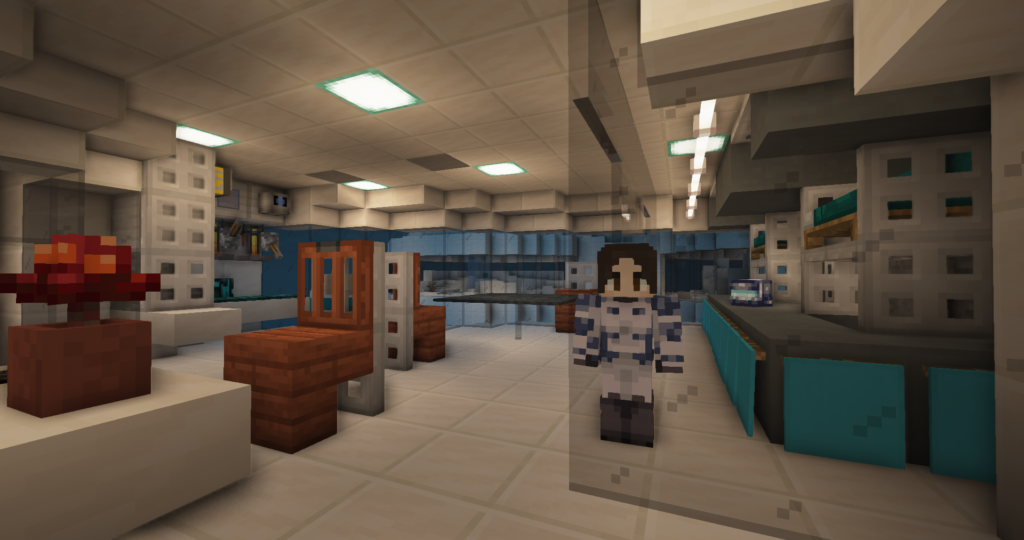
The Space Station Hub is the central point of WHIMC. It has two main quests for the player: to see the “What-if” worlds, and to see the exoplanets. Using the Space Station Hub as an arrival and departure point, players can travel and explore various worlds to fulfill their missions and work towards unlocking the explorer and scientist ranks. Speaking to the non-playable character (NPC) Jeff Ginger at the front can lead students to the “What-if” worlds.
At the Space Station Hub, students can also fulfill quests and explore, as the area is large and free to roam around in, with multiple NPCs to speak to. Ultimately, the use of the hub depends on the goal of the educator and the students alike. The hub can be skipped to opt for a focus on the “What-if” worlds, but can also be explored to encourage self-discovery and curiosity.
What-If Worlds
The “What-if” Earths are simulations of our world with differing astronomical conditions that affect life on Earth. Here, students can experience and make observations on what life may look like on an Earth with no moons, two moons, and so on.

- Unaltered Earth
- The Unaltered Earth serves as the basis of observation for the other “What-if” worlds. It’s a regular version of Earth with no changes made, and it serves as a practice world for students to make observations and ground their understanding of the worlds somewhere “normal”.
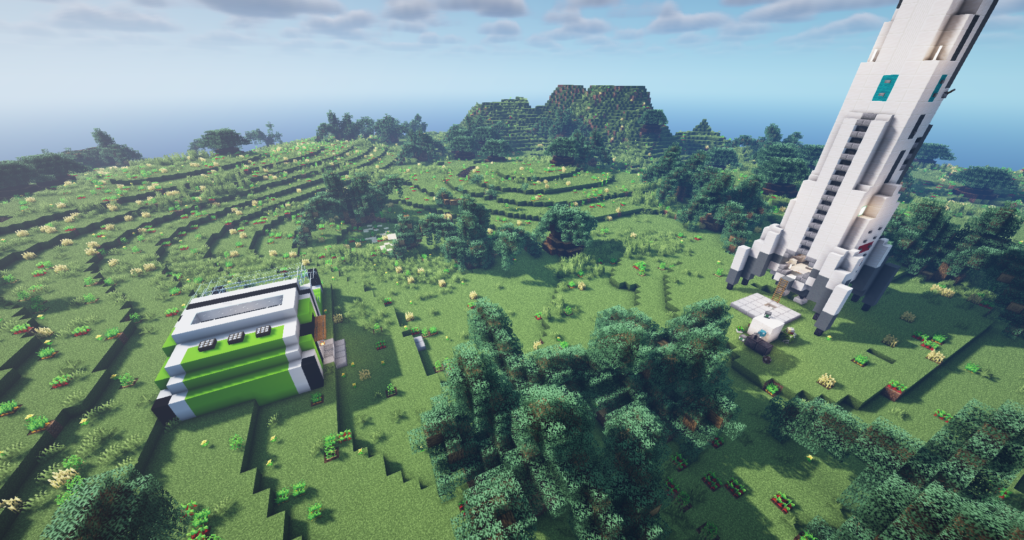
- Earth with No Moon
- The Earth with No Moon is the first “What-if” and serves as the first step for students to really explore and observe. Players can note how the moon has a great impact on Earth’s tides and winds.

- Earth with a Colder Sun
- In the Earth with a Colder Sun world, players can note the changes in the environment brought about by shifts in the temperature. They can also observe the ways that life on Earth could change and continue to survive given extreme temperature changes. Additionally, students can learn about renewable energy sources and how people may adapt in this unique environment.

- Tilted Earth
- In the Tilted Earth scenario, players can observe what happens if the Earth’s axis and rotational patterns were different. They will see what impact these shifts have on the seasons’ timing and temperatures. Additionally, students can observe how plant and animal life cycles would adapt and change.

- Mynoa (Earth as Moon)
- Mynoa is an exoplanet orbiting a large gas giant called Tyran. Players can observe what kind of environments an Earth-sized moon in the orbit of a gas giant might have. Students can also learn about how ecosystems and tides are affected by gravity.
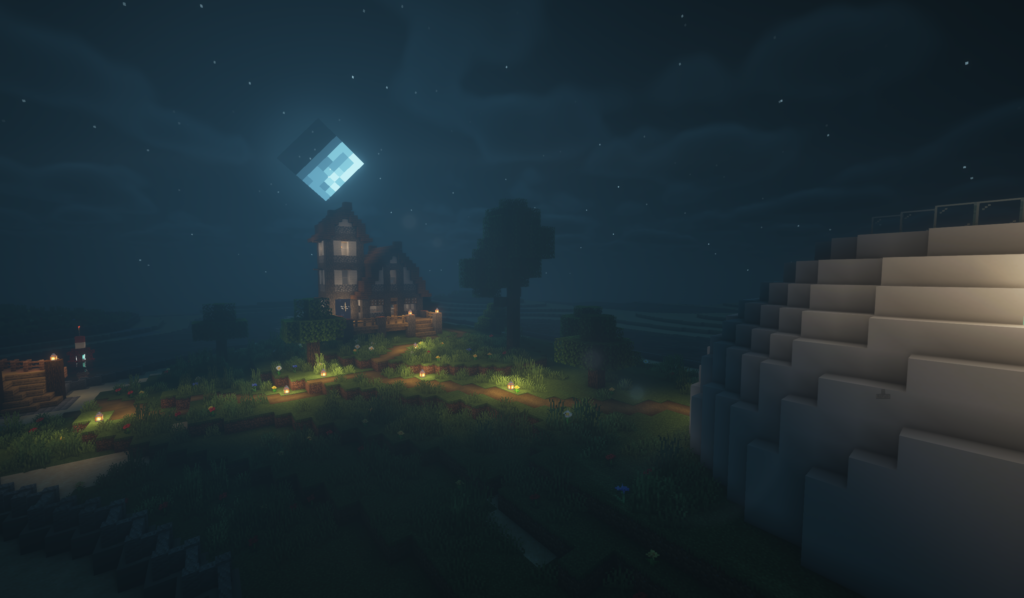
- Earth with Two Moons
- In the Earth with two Moons , players can observe the effect of two moons on the tides, light at nighttime, and the rotational speed of Earth. Additionally, students can learn about how coastal towns manage water level changes and erosion caused by tides.
Exoplanets
The exoplanets are simulations of worlds we may never see, but know enough about to study. Here, students can explore the idea of life on other planets and consider the many variables that make a planet habitable or uninhabitable.
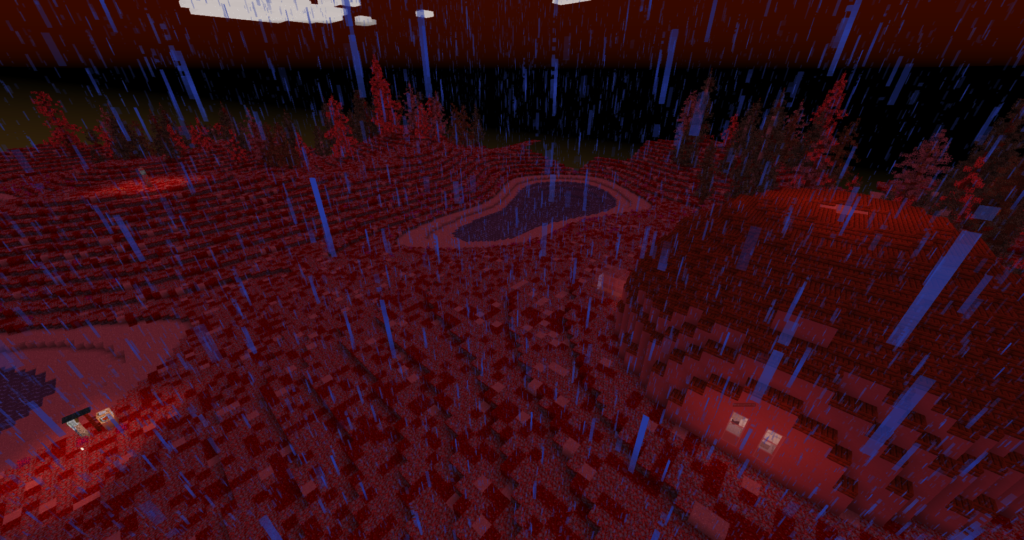
- Kepler 186f
- Kepler 186f is an exoplanet orbiting an M-type star within its habitable zone. Students can observe “alien” life through plant-life, encouraging them to inquire about the differences that atmospheres and star colors can have on light and the life it touches. Students can also compare and contrast regular Earth from Kepler 186f, allowing them to ask open-ended questions and engage their curiosity.

- Gliese 436b
- Exoplanet Gliese 436b is a gas giant undergoing massive and constant exothermic activity where ice sublimates into gas and fire. The Gliese 436b map is unique because players get the chance to fly around the planet and make observations from any height, like a probe. Students are encouraged to observe and explore the contours, hills, valleys, and layers of the surface, as well as inquire on what made them so in this unique environment.

- Cancri 55e
- Exoplanet Cancri 55e orbiting an ultra-cool dwarf star, with one side always facing the star, students can observe what happens to a planet that’s tidally locked. Students are also encouraged to explore and make observations on the differences between the two sides of Cancri 55e.
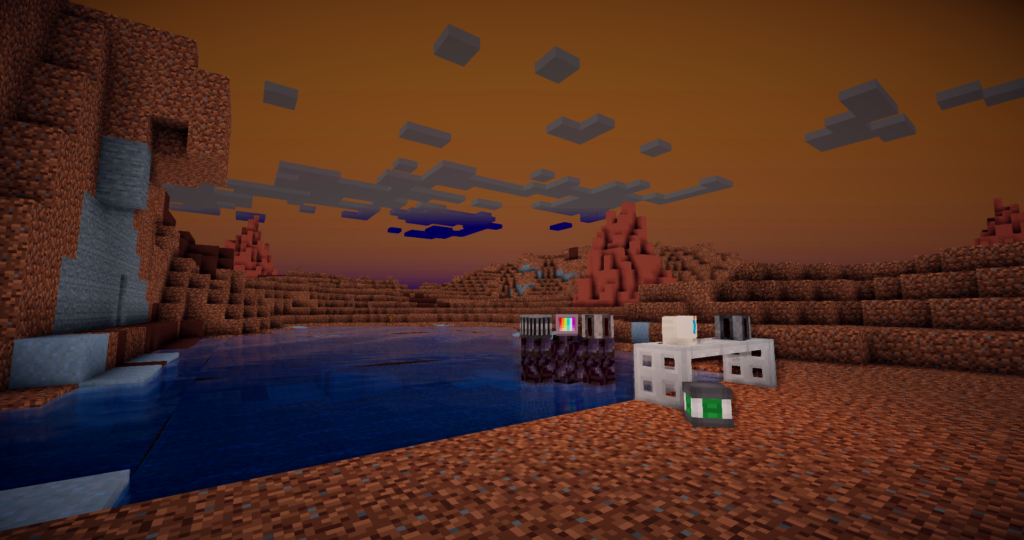
- Trappist 1e
- Trappist 1e is an exoplanet that explores an unlivable environment for humans. Students can observe how water as we understand it can come in different compositions, as well as observe how radiation can affect the atmosphere.
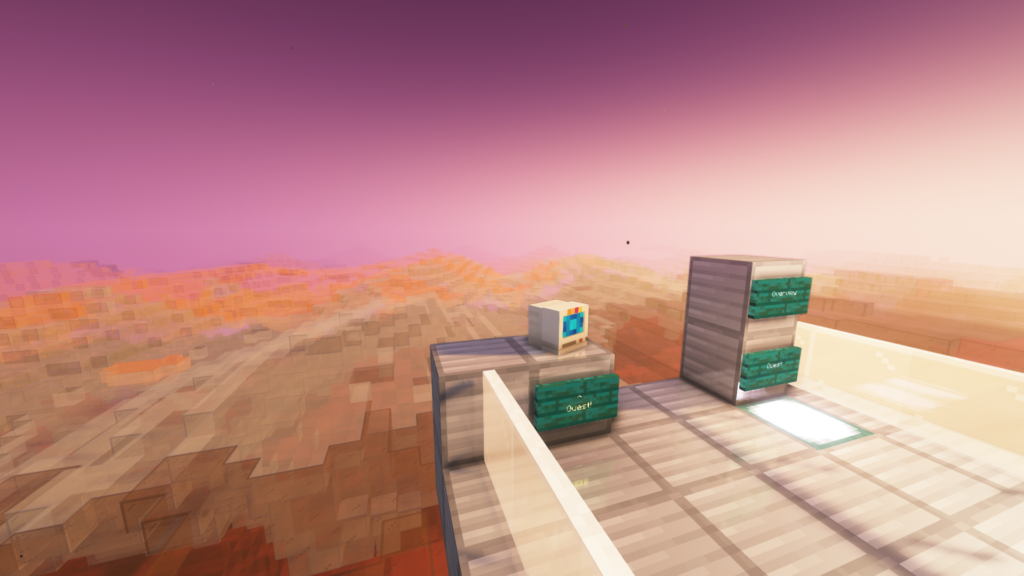
- Brown Dwarf (CWW 89ab)
- CWW 89Ab is an astronomical body believed to be a brown dwarf, also known as “failed stars”. Students can pilot a probe to measure and make observations on the composition of the atmosphere to determine if CWW 89Ab is a brown dwarf or a gas giant.
About the Project
2021-2023: DOST-PCIEERD Grant – Nurturing Interest in STEM among Filipino learners using Minecraft
Executive Summary
The goal of this project is to make use of Minecraft to cultivate interest in Science, Technology, Engineering, and Mathematics among Filipino students. It leverages on Minecraft, specifically the project “What-If Hypothetical Implementations in Minecraft”(WHIMC) from the University of Illinois Urbana Champaign. WHIMC immerses learners in researcher-built Minecraft exoplanets and challenges them to offer scientific explanations for the phenomena that they observe. Learners also need to build habitats that would allow human beings to survive, using the materials available in these planets. To this end, the project team hopes to work with STEM teachers to integrate the use of WHIMC in their classes. From the data collected from student interactions with WHIMC, the project team hopes to determine what triggers interest, what factors are most important to supporting interest, and what are most effective for learners who are underrepresented in STEM. It builds on work on the use of bouncy castle games for education as well as learning analytics to study learner affect and behavior. The research questions we hope to answer include:
- (RQ1) What features of learning experiences best frame science learning and encourage re-engagement with content over time?
- (RQ2) What pedagogical strategies are most effective in promoting STEM interest and learning?
- (RQ3) How can a technology infrastructure be used to monitor and track changes in STEM interest over time?
Project Description
The project will make use of Minecraft to cultivate interest in Science, Technology, Engineering, and Mathematics among Filipino students. It leverages on Minecraft, specifically the project ?What-If Hypothetical Implementations in Minecraft? (WHIMC) from the University of Illinois Urbana Champaign. This project has two main foundations: the games for STEM education and the use of learning analytics to study learner affect and behavior. The project team will work with STEM teachers to integrate the use of WHIMC in their classes. As students use WHIMC, the system will collect data regarding their interactions with the system. The project team will then analyze the data to arrive at insight regarding student behavior, affect, and achievement.
Funded by: Philippine Council for Industry, Energy and Emerging Technology Research and Development (PCIEERD)
2023: University Research Council Grant – School Deployment of the What-if Hypothetical Implementations in Minecraft (WHIMC)
This is a continuation of the grant entitled Nurturing Interest in STEM Among Filipino Learners Using Minecraft headed by Dr. Rodrigo and funded by DOST from 15 March 2021 to 14 March 2023. The purpose of the proposed project is to deploy WHIMC with other schools, preferably public schools, and to determine what impact WHIMC has on these same outcomes. The scope of this project includes teacher training, lesson plan preparation, assistance with classroom implementation, data collection, and analysis.
How To Access WHIMC
Minecraft Java Edition
Download the Minecraft Launcher through this link: https://www.minecraft.net/en-us/download
To access the server, launch Minecraft Java Edition (version 1.19.2).
Add the WHIMC server by entering the subdomain or IP address noted below:
Subdomain: apx659687.apexmc.co
IP Address: 139.99.23.136:25565
You may follow the Teacher’s Guide below to setup your game.
WHIMC Teacher’s Guide – MINECRAFT JAVA EDITION
Minecraft Education Edition (EE)
Download the Minecraft Education Edition through this link: https://education.minecraft.net/en-us/get-started/download
To get the WHIMC Worlds for Minecraft Education Edition (EE), click here and download all the WHIMC EE .mcworld files found in the original folder.
To get fully set up on Minecraft Education Edition, follow the instructions on the Teacher’s Guide below.
WHIMC Teacher’s Guide – MINECRAFT EDUCATION EDITION
Sample Lesson Plans

http://bit.ly/WHIMCRESOURCEMATERIALS
Partner Schools and/or Teachers
Elementary Schools
Ateneo de Manila Grade School
Miriam College Grade School
Leopoldo B. Santos Elementary School
Ramon Magsaysay Elementary School
High Schools
Ateneo de Manila Junior High School
Xavier University High School


